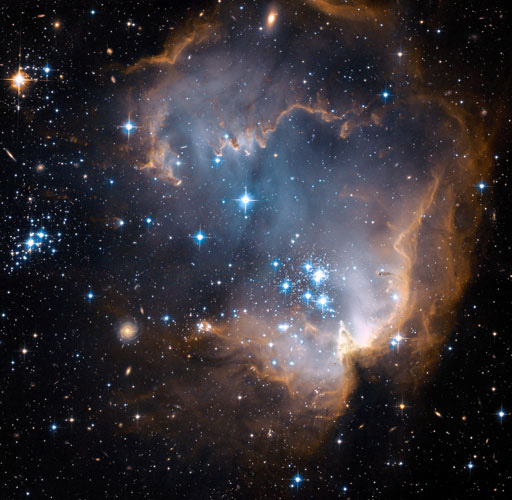
On Christmas Eve, 2009, the startling hypothesis that our Solar System, the Sun and all its planets, are moving into a potentially dangerous and destabilizing interstellar energy cloud, was resoundingly sustained. In their research paper, "A strong, highly-tilted interstellar magnetic field near the Solar System," published the December 24, 2009 issue of Nature, a highly respected scientific journal, M. Opher et al report on data transmitted from Voyager, the twin spacecraft that have been exploring the outer reaches of the Solar System since 1977.
"We have discovered a strong magnetic field just outside the solar system. This magnetic field holds the interstellar energy cloud together and solves the long-standing puzzle of how it can exist at all," says Opher, a NASA Heliophysics Guest Investigator from George Mason University. He explains that this energy cloud is at least twice as strong as had previously been predicted and that the Solar System has begun to pass into it, adding that this field "is turbulent or has a distortion in the solar vicinity."
In fact, most scientists had either minimized the possible significance of the interstellar energy cloud or dismissed the whole notion of its existence altogether. But not Dr. Alexei Dmitriev, the esteemed Russian space physicist whom I visited in Akademgorodok, a clandestine scientific research city outside of Novosibirsk, Siberia. In my recent book, Apocalypse 2012: An Investigation into Civilization's End, I detailed Dmitriev's conclusions, based on his team's analysis of Voyager data, that the atmospheres of Jupiter, Saturn, Uranus and Neptune are inexplicably excited -- immense storms, mammoth eruptions, plasma arcs jetting from the planets' surface to their moons. He reasoned that this turbulence is caused by an external injection of energy into the planets' atmospheres: to wit, an interstellar energy cloud which the leading edge of the Solar System has now entered.
=======================================
No comments:
Post a Comment